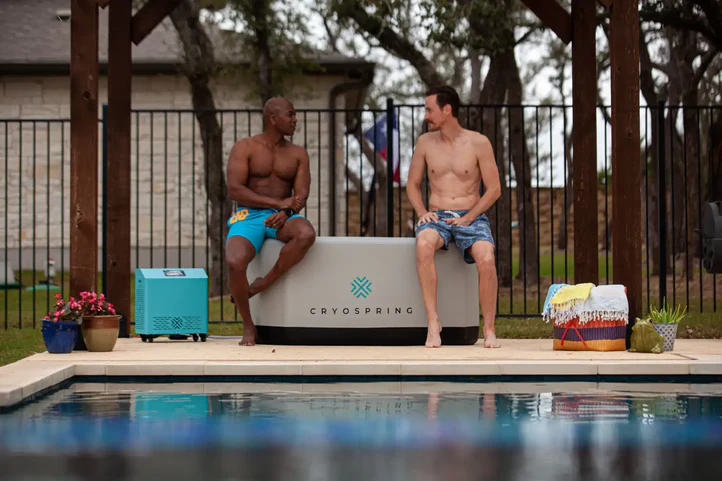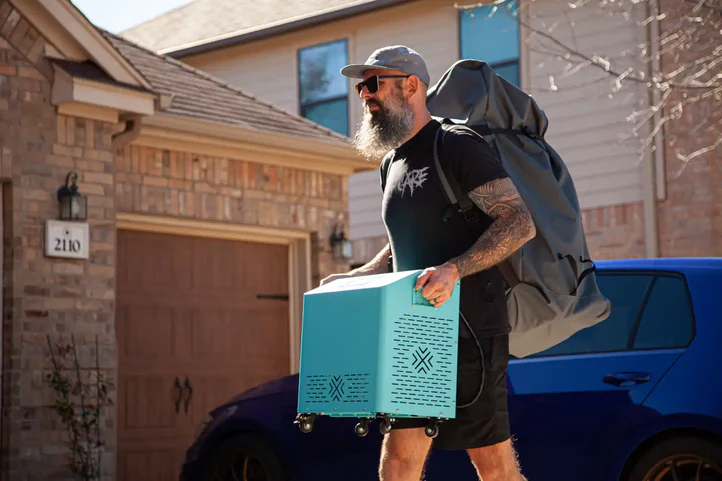What Are the Risks of Cold Therapy?
Cold therapy, known as cryotherapy, is widely used to reduce pain and inflammation. While it offers numerous benefits, understanding the potential risks is essential. This article will explore the dangers of cold therapy and provide tips on using it safely.
Understanding Cold Therapy
Cold therapy involves applying cold temperatures to the body to reduce pain and inflammation and is also commonly known as ice barrel cold therapy. It’s commonly used by people recovering from injuries, surgeries, or chronic pain. Despite its benefits, improper use of cold therapy can lead to various risks.

Common Risks of Cold Therapy
While cold therapy can be highly effective, it’s important to understand the potential risks to avoid complications:
- Frostbite: Prolonged exposure to extreme cold can cause frostbite, where the skin and underlying tissues freeze. Symptoms include numbness, discoloration, and a waxy texture. To prevent frostbite, always use a barrier between your skin and the cold therapy device, such as a cloth or bandage.
- Skin Burns: Direct contact with cold therapy devices can lead to ice burns like frostbite. These burns occur when the skin is exposed to freezing temperatures for too long. Using a protective layer and limiting the duration of each session can help prevent skin burns.
- Nerve Damage: Extended cold therapy can damage nerves, leading to numbness and loss of sensation in the affected area. Limiting each session to 15-20 minutes to avoid nerve damage and take breaks between sessions.
- Poor Circulation: Cold therapy can constrict blood vessels, which may be problematic for people with poor circulation or vascular conditions. If you have circulatory issues, consult a healthcare professional before using cold therapy.
- Infections: If you have an open wound or skin condition, using cold therapy without proper hygiene can increase the risk of infections. Ensure the cold therapy device is clean, and avoid using it on broken skin.
Safety Tips for Using Cold Therapy
To minimize the risks associated with cold therapy, follow these safety tips:
- Use a Barrier: Always place a cloth or bandage between your skin and the cold therapy device to prevent frostbite and ice burns.
- Limit Session Duration: Keep each cold therapy session to 15-20 minutes. Take breaks between sessions to allow your skin to return to its normal temperature.
- Monitor Skin Condition: Regularly check your skin for signs of frostbite, burns, or other issues. If you notice any problems, discontinue use and consult a healthcare professional.
- Follow Medical Advice: If you have any medical conditions, especially those related to circulation, nerves, or skin, seek advice from a healthcare professional before using cold therapy.
- Maintain Hygiene: Ensure the cold therapy device is clean before each use to prevent infections. Avoid using cold therapy on open wounds or areas with skin conditions.
Benefits of Proper Cold Therapy Usage
When used correctly, cold therapy can provide numerous benefits:
- Pain Relief: Cold therapy numbs the affected area, helping to alleviate pain.
- Reduced Swelling: Cold temperatures constrict blood vessels, reducing inflammation and swelling.
- Faster Recovery: By managing pain and inflammation effectively, cold therapy can speed up recovery.
Conclusion
While cold therapy can be beneficial for managing pain and inflammation, it’s important to be aware of the potential risks. You can use cold therapy effectively and safely by understanding these risks and following safety guidelines. Always listen to your body and consult a healthcare professional with any concerns. With the right approach, cold therapy can be a valuable tool in your recovery routine.
For more information and resources on cold therapy, visit the Carbon Wellness. If you want a high-quality cold therapy machine, consider the Ice Barrel 300 Cold Therapy Barrel. Additionally, check out our recommended products:
- Barrel + Chiller: Penguin Chillers Cold Therapy Chiller
- Insulated Tub + Chiller: Penguin Cold Therapy Chillers & Insulated Tub
- Portable Tub + Chiller: Penguin Chillers Cold Therapy Chiller + Tru Grit Inflatable Tub
- Affordable DIY Chiller (no tub): Penguin Chillers 1/2 HP Water Chiller
- Cold + Hot Plunge: Cryospring Cold + Hot Plunge System
Explore these options to find the perfect cold therapy solution for your needs and enhance your recovery routine.

